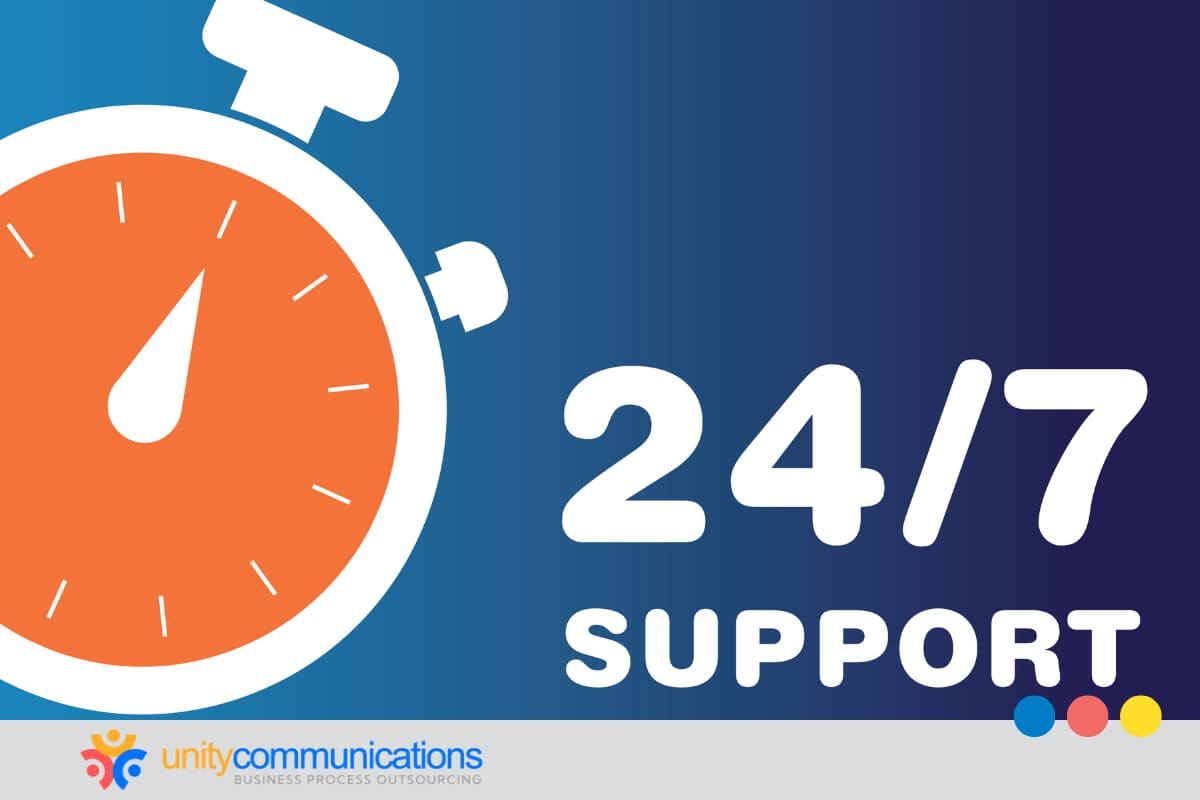Table of Contents
Planning and scheduling the workforce are crucial in ensuring effective business process outsourcing (BPO) management, as they directly impact service levels and operating costs. Service level refers to an organization’s performance within a specified time frame, while operating costs encompass labor, technology, and overhead expenditures.
Balancing these two priorities necessitates a strategic perspective considering demand fluctuations, staff availability, skill sets, and performance indicators.
This article delves into BPO managers’ strategies to enhance workforce schedules, unlock operational efficiency, and reduce costs.
Challenges of Managing BPO Work Schedules

BPO often involves demanding work, such as handling customer service, technical support, and other business processes for clients. As beneficial as the strategy is, BPO challenges abound. Here are some challenges associated with managing BPO workers’ schedules:
- 24/7 operations. Most BPO firms operate 24/7 to serve clients in different time zones. Thus, scheduling must accommodate various shifts, including nights and weekends. Managing employee fatigue and ensuring fair distribution of these less desirable shifts can be challenging.
- High attrition rates. The BPO industry is known for relatively high attrition rates. The constant need to recruit and train new BPO workers makes schedule management difficult. Consistent turnover can disrupt team dynamics and increase the workload for existing staff.
- Complex scheduling. Creating a schedule that meets client demands, complies with labor laws, and accommodates employee preferences can be tricky. Balancing the needs of the business with individual employee preferences requires a sophisticated scheduling system and the ability to adapt to changing circumstances.
- Remote work challenges. Sixty-four percent of employees work remotely, and this virtual arrangement has introduced new challenges to managing work schedules. Ensuring third-party professionals have the necessary tools and connectivity to work from home effectively and productively can be a hurdle.
- Regulatory compliance. BPO companies must comply with labor laws and regulations in their countries. Managing work schedules while adhering to legal requirements regarding working hours, breaks, and overtime can be complicated, especially in a globalized industry.
Strategies for Optimizing Workforce Planning and Scheduling in BPO

So, what is BPO’s role in optimizing work schedules?
BPO firms often invest in advanced workforce management systems, provide comprehensive employee training and support, and implement strategies to enhance employee engagement and satisfaction. Regular communication and feedback between leadership and staff are also crucial in managing BPO work schedules effectively.
Workforce management involves processes designed to attain and sustain operational efficiency. It aims to align the anticipated workload with the scheduled number of agents and minimum paid labor hours without compromising revenue, adversely affecting employee satisfaction, or harming client relations.
BPO companies that successfully strike this balance enjoy significant benefits, including decreased operational expenses, reduced employee turnover, and an enhanced customer experience. Outsourcing clients also enjoy the following benefits:
- Elevated service levels
- Enhanced first call resolution (FCR) and customer satisfaction
- Improved staff retention and overall employee experience
Here are strategies to optimize workforce planning and scheduling in a BPO setting.
Forecasting Demand
The first step in workforce planning is to predict the expected workload and how tasks will be distributed across different time intervals. Analyzing historical data, seasonal trends, marketing initiatives, consumer behavior, and other external factors influencing demand can help achieve this.
The goal is to estimate the required number of agents to avoid overstaffing or understaffing, adjusting service level targets based on peak and off-peak periods.
Assessing Agent Skills
BPO managers must thoroughly understand each agent’s skills. Some agents may specialize in handling general inquiries or limiting scheduling flexibility, while others are great multitaskers with broad knowledge and can address complex issues.
Analyzing the nature of tasks handled by agents reveals preferences, proficiencies, and skill diversity. Specialized agents should be scheduled in their preferred areas to enhance efficiency.
Scheduling Top Agents for Peak Periods
Analyzing call metrics helps identify peak call periods when top-performing agents should be on duty. Metrics such as FCR, speed to answer, and handled call volume determine top agents. Having efficient agents during peak times is crucial to preventing poor customer service and ensuring a positive experience.
Cross-training Agents
Schedules may change unexpectedly due to spikes in workload or sudden agent shortages. Cross-training agents with multiple skills provides flexibility during such crises. Studies indicate that call center productivity improves significantly when agents are trained to handle numerous tasks.
Managing Time Away From Workstations
Promote a culture of strict adherence to scheduled breaks, lunchtimes, meetings, training, and after-call tasks to optimize workstation efficiency. Agents must be trained to recognize the significance of adhering to schedules and strict break guidelines.
BPO managers must continuously monitor the system to promptly address any deviations. Agents should be informed that scheduled breaks may require adjustments based on unexpected call influxes.
Establishing a Reserve of Agents
Maintain a pool of on-call agents ready to work when needed, especially for unforeseen circumstances such as sudden sick calls. Notify reserve agents in advance to offer additional work to those available.
This practice is crucial for smaller call centers with limited budgets and staff, while larger operations may have the flexibility to handle fluctuations in call volume. Intraday scheduling is valuable for managing unexpected day-off changes in call centers.
Importance of Adherence in BPO Workforce and Schedule Management

Adherence is a crucial aspect of the BPO schedule management cycle. It provides a nuanced understanding of efficiency and productivity for effective intraday management, long-term forecasting, scheduling, and performance evaluation.
The cornerstone of exceptional customer service lies in having the right people with the right skills in the right place and time. Studies show that 60% of customers will switch brands based on the quality of service. Needless to say, when agents deviate from their schedules, workforce planning efforts become futile.
To enhance adherence in your contact center, consider the following strategies:
- Establish accurate and dynamic adherence goals tailored to the specifics of a multiskill, multichannel contact center with diverse call lengths.
- Implement daily adherence measurements for a fast-paced contact center environment, allowing for precise benchmarking and more efficient intraday management than weekly or monthly measurements.
- Broaden adherence accountability beyond agents by involving contact center managers who should collaborate with the workforce management team to maintain schedule accuracy.
The Bottom Line
The list above shows the strategies you can implement to enhance your BPO scheduling. Remember that your schedule should be flexible to adapt to unforeseen changes in call center operations.
The greater the variety of options you can establish for scheduling adjustments, the more effectively you can facilitate a seamless BPO operation, ultimately diminishing stress levels.
Let’s connect if you want to learn more about outsourcing and how it can help you.




